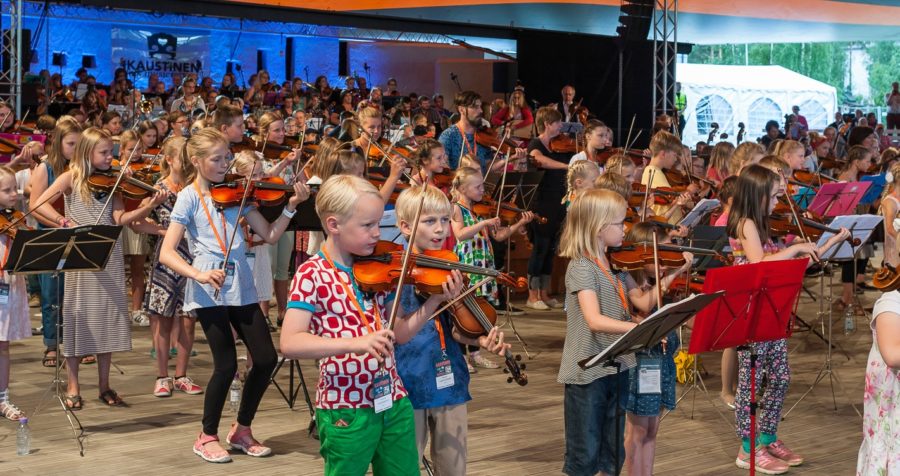The Näppäri Method

Background
The Näppäri Method is a method of music education for children and young people, which is largely based on the Kaustinen tradition of Finnish folk music as well as other folk music traditions from Finland and abroad. Näppäri activities were started in the early 1980s by folk musician and pedagog Mauno Järvelä.
The Näppäri Method is a continuation of the tradition of fiddle playing that has survived and developed in Kaustinen for over 300 years, producing prominent individuals and events, such as Konsta Jylhä, Kaustinen Purppuripelimannit and the Kaustinen Folk Music Festival. The Näppäri activities, which continue to educate new musicians, play an essential role in fostering and securing the tradition. Thanks to the shared repertoire, the threshold for moving from a Näppäri group to playing with adult folk musicians is low.
In the Näppäri ideology, the local foundation and international aspects of folk music go hand in hand. The local ways are not seen as a counter to other local traditions but, instead, to popular culture and to the canonical range of music education, both of which offer the same thing for everyone everywhere.
The Näppäri Method has attracted a lot of attention in the fields of music education and upholding traditions – over the decades. A book on the Näppäri Method was published in 2014 in Finnish, English and German. Mauno Järvelä has been honoured with many awards for his work.
Above: From the festival arena at the Mukulamatinea Concert.
Objectives
The goal of Näppäri activities is to provide every willing person with the opportunity to engage in music, make playing music part of day-to-day life once more, bring musicians of all ages and skill levels together to play, maintain the vitality of the folk music tradition and incorporate it into educational content, and promote boundless and timeless musical education.
How it was done
In the Näppäri concept, children and young people of all ages and skill levels play and sing together, with a focus on folk music tunes and pieces written specifically for the purpose. The cornerstones of the approach are playing music as a community and including every willing musician. There are no entrance exams or auditions: all are welcome to join in and play irrespective of how goal-oriented they are. It is also possible to complete normal qualifications available at music academies and gain professional specialisations, but the core educational goals are the joy of playing together and restoring the act of playing music as part of day-to-day life, regardless of how seriously participants take the hobby.
The Näppärit tunes, which are intended to be played together, are arranged to enable even four-year-old beginners and experienced musicians to play together with no practical limitation to the total number of players. As a result, hundreds of musicians normally take the stage in the final concerts of the largest courses and the traditional large Näppäri concert held at Kaustinen Folk Music Festival. The core of the instrument line-up is formed by the staples of the Kaustinen folk music tradition – fiddle, double bass and harmonium – but in practice, all instruments are welcome.
The Näppäri group in Kaustinen operates year-round and has achieved success performing all over Finland and the globe. Massive Näppäri course with hundreds of participants are held in Kaustinen in early June as well as weekend courses organised at music academies. Thanks to this practice, Näppäri courses have spread from Kaustinen to all parts of the country. Several thousand children and young people take part in the various courses each year.
Key factors
1. The spring board effect
Näppäri groups have served as a springboard for many young Finnish folk music professionals and bands, as well as top professionals in other genres of music. However, it is equally important that the groups have produced dozens of amateur musicians who continue their hobby as adults, maintaining the centuries-old tradition of fiddle playing in the Kaustinen-style.
2. Inclusiveness and joy
- Everyone can participate regardless of skill level and ultimate goals.
- Everyone plays together
- The joy of playing is the key

